When does my baby start teething. When Do Babies Start Teething? Symptoms, Remedies, and Care Guide
When do babies typically start teething. What are the common signs and symptoms of teething. How can parents soothe a teething baby. Which treatments should be avoided for teething babies. How to care for a baby’s new teeth.
The Teething Process: What Parents Need to Know
Teething, also known as odontiasis, is a natural process where a baby’s teeth begin to emerge through the gum line. This milestone in a child’s development can be both exciting and challenging for parents. Understanding the teething process can help you better support your baby during this time.
Most infants begin teething between 4 and 7 months of age, but this can vary widely. Some babies may start teething as early as 3 months, while others might not see their first tooth until after their first birthday. It’s important to remember that every child develops at their own pace, and there’s typically no cause for concern if your baby’s teeth come in on a different schedule.
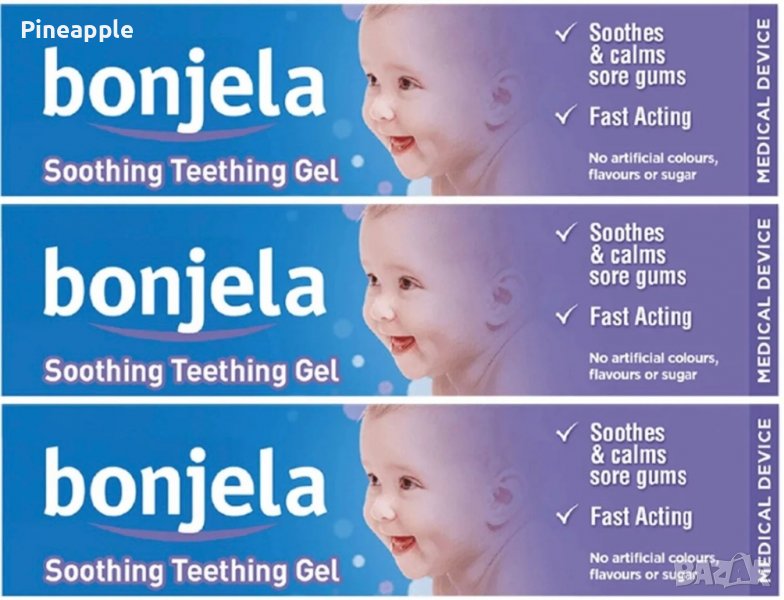
When do babies usually get their first tooth?
The lower front teeth (central incisors) are often the first to appear, usually between 6 and 10 months of age. However, the exact timing and order can differ for each child. Here’s a general timeline of tooth eruption:
- Lower central incisors: 6-10 months
- Upper central incisors: 8-13 months
- Upper lateral incisors: 9-13 months
- Lower lateral incisors: 10-16 months
- First molars: 13-19 months
- Canine teeth: 16-23 months
- Second molars: 23-33 months
By the age of 3, most children will have a full set of 20 primary teeth, also known as baby teeth.
Recognizing the Signs and Symptoms of Teething
Teething can be uncomfortable for babies, and they may exhibit various symptoms. It’s crucial for parents to recognize these signs to provide appropriate comfort and care. However, it’s important to note that not all babies experience the same symptoms, and some may have very little discomfort during teething.
What are the most common teething symptoms?
While teething experiences can vary, here are some of the most frequently observed symptoms:

- Swollen, tender gums
- Increased fussiness and crying
- Slight increase in body temperature (less than 101°F or 38.3°C)
- Desire to chew on hard objects
- Excessive drooling
- Facial rash (often caused by excessive drooling)
- Rubbing cheeks or pulling ears
- Changes in eating or sleeping patterns
It’s important to distinguish between normal teething symptoms and signs of illness. Teething doesn’t typically cause high fever, diarrhea, or vomiting. If your baby experiences these symptoms, it’s best to consult with your pediatrician.
Effective Remedies to Soothe a Teething Baby
As a parent, seeing your baby in discomfort can be distressing. Fortunately, there are several safe and effective ways to soothe a teething baby. Remember that what works for one child may not work for another, so you might need to try different methods to find what best comforts your baby.
How can I relieve my baby’s teething pain?
Here are some tried-and-true remedies to help alleviate teething discomfort:
- Cold therapy: Offer your baby a cold teething ring, a clean, damp washcloth that’s been chilled in the refrigerator, or a cold spoon. The cool temperature can help numb the gums and provide relief.
- Gum massage: Gently rub your baby’s gums with a clean finger. This can help alleviate pressure and provide comfort.
- Teething crackers: For babies over 6 months, offer hard, unsweetened teething crackers to gnaw on.
- Hydration: If your baby is over 6 months, offer cool water from a sippy cup to help soothe their gums.
- Pain relievers: In cases of significant discomfort, consult your pediatrician about using infant-appropriate pain relievers like acetaminophen.
Always supervise your baby when they’re using teething toys or crackers to prevent choking hazards.

Teething Treatments to Avoid: Ensuring Your Baby’s Safety
While there are many safe ways to soothe a teething baby, some popular remedies can be harmful. It’s crucial for parents to be aware of potentially dangerous treatments and avoid them to ensure their baby’s safety.
Which teething remedies should be avoided?
Steer clear of the following teething treatments:
- Teething necklaces: These pose a strangulation risk and are not recommended by child health experts.
- Amber teething necklaces: There’s no scientific evidence supporting their effectiveness, and they pose similar risks as other teething necklaces.
- Teething gels containing benzocaine: The FDA advises against using these products for children under 2 due to potential serious side effects.
- Frozen teething rings: These can be too hard and may harm your baby’s gums. Refrigerated (not frozen) teething rings are a safer alternative.
- Liquid-filled teething rings: These can tear and leak, posing a choking hazard.
- Teething tablets containing belladonna: The FDA has warned against these due to inconsistent amounts of belladonna, which can be harmful.
Always prioritize your baby’s safety when choosing teething remedies. When in doubt, consult with your pediatrician for safe and effective options.
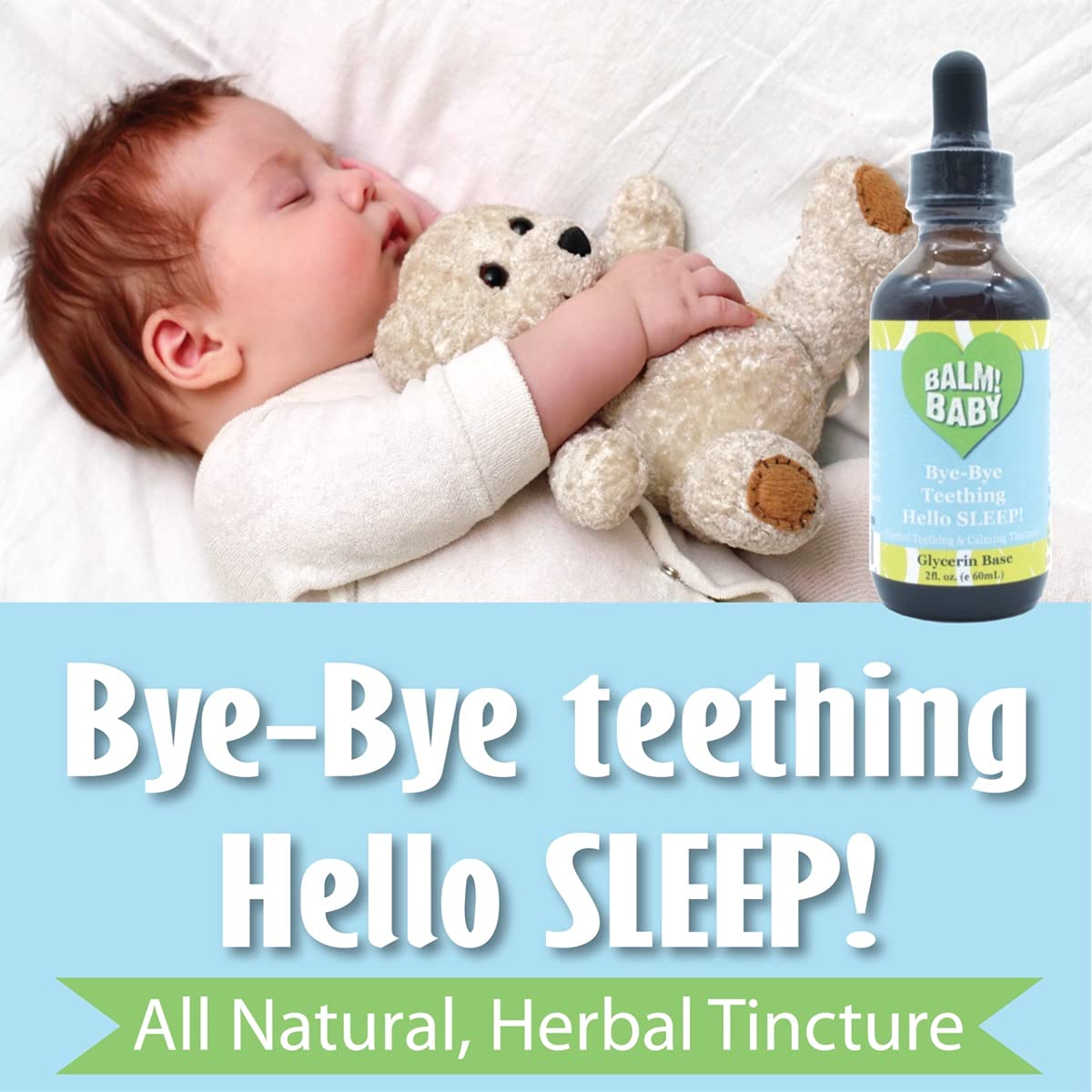
Caring for Your Baby’s New Teeth: Establishing Good Oral Hygiene
As your baby’s teeth begin to emerge, it’s crucial to start implementing good oral hygiene practices. Proper care from the beginning can set the foundation for a lifetime of healthy teeth and gums.
How should I care for my baby’s new teeth?
Follow these guidelines to ensure proper oral care for your teething baby:
- Start early: Even before teeth appear, clean your baby’s gums with a soft, damp cloth or gauze pad at least once a day.
- Choose the right toothbrush: Once teeth emerge, use a small, soft-bristled toothbrush designed for infants.
- Use appropriate toothpaste: For children under 3, use a rice-grain sized amount of fluoride toothpaste. From 3-6 years, increase to a pea-sized amount.
- Brush gently: Clean all surfaces of the teeth and gums twice daily, in the morning and before bed.
- Avoid bottle decay: Don’t put your baby to bed with a bottle of milk or juice, as this can lead to tooth decay.
- Schedule a dental visit: Plan your baby’s first dental appointment by their first birthday or within six months of their first tooth appearing.
Establishing these habits early can help prevent cavities and ensure your child’s oral health as they grow.

Understanding Teething and Overall Health
While teething is a normal part of a baby’s development, it’s important to understand its relationship to overall health. Many parents wonder if teething can cause other health issues or if certain symptoms are related to teething.
Can teething make my baby sick?
Teething itself doesn’t usually make babies sick. While it can cause discomfort and some mild symptoms like a slightly elevated temperature, it shouldn’t cause high fever, diarrhea, or vomiting. If your baby experiences these symptoms, it’s more likely they’re ill with something unrelated to teething.
It’s crucial to monitor your baby’s symptoms closely during the teething period. If you notice any of the following, contact your pediatrician:
- Fever over 101°F (38.3°C)
- Diarrhea or vomiting
- Rashes on the body (not just around the mouth)
- Cough or congestion
- Symptoms lasting longer than 24 hours
- Bleeding gums
- Signs of dehydration
Remember, while teething can coincide with other illnesses due to the age at which it occurs, it’s not typically the cause of serious health issues.

Navigating the Teething Journey: Tips for Parents
The teething process can be challenging for both babies and parents. Here are some additional tips to help you navigate this journey:
How can I make the teething process easier for my baby and myself?
Consider these strategies to ease the teething process:
- Be patient: Remember that teething is temporary, and this phase will pass.
- Maintain routine: Try to stick to your baby’s normal feeding and sleep schedules as much as possible.
- Offer extra comfort: Your baby may need more cuddles and attention during this time.
- Keep things clean: Regularly wash teething toys and your hands to prevent introducing bacteria to your baby’s mouth.
- Stay informed: Keep track of which teeth have come in and when, to share with your pediatrician.
- Take care of yourself: Teething can lead to sleepless nights for parents too. Ensure you’re getting enough rest and support.
Remember, every baby is different, and what works for one may not work for another. Be flexible and willing to try different approaches to find what best soothes your baby.
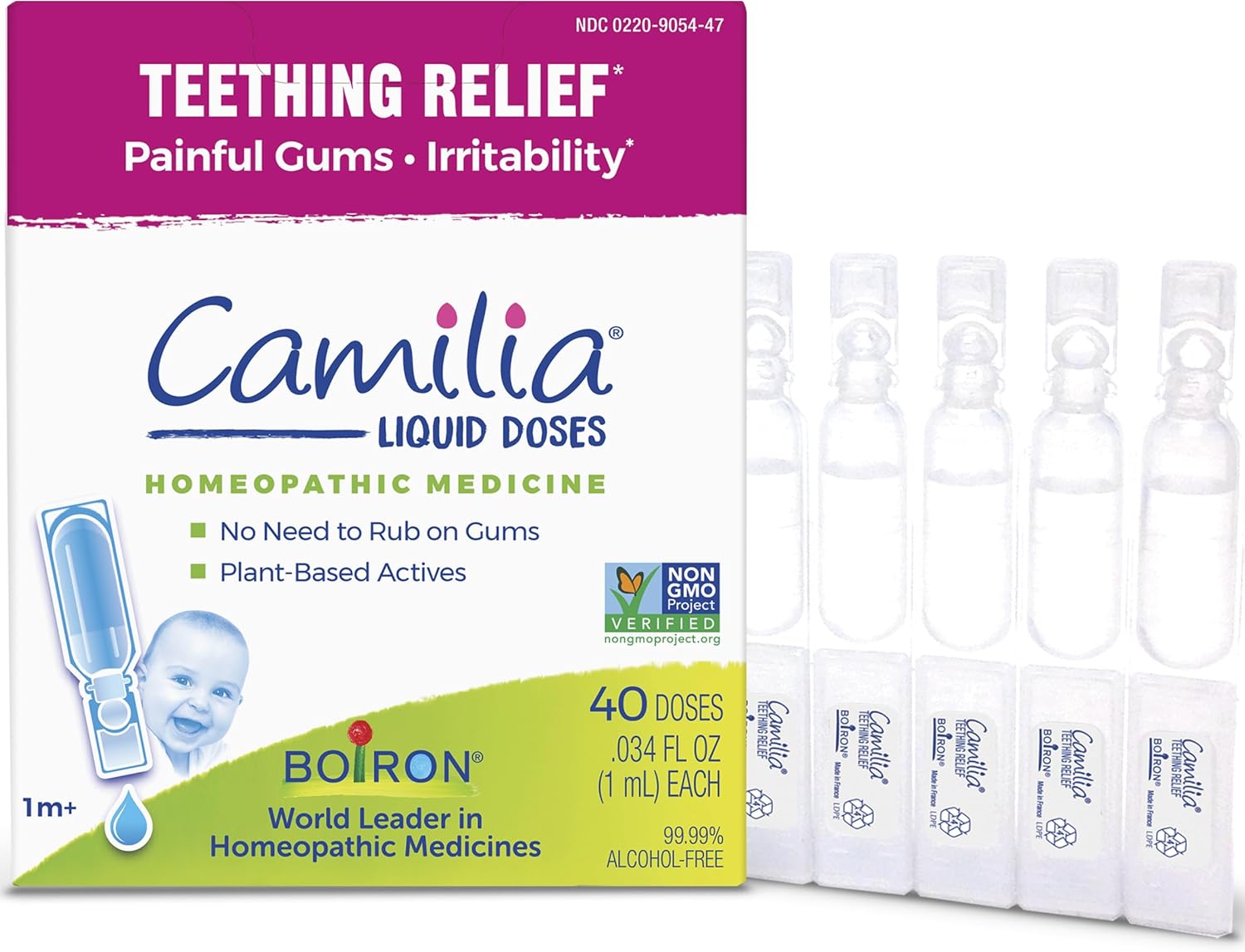
Debunking Common Teething Myths
There are many misconceptions surrounding teething, which can lead to unnecessary worry or inappropriate treatments. Let’s address some common myths to ensure parents have accurate information.
Are fever and diarrhea normal teething symptoms?
Contrary to popular belief, high fever and diarrhea are not typical teething symptoms. While teething may cause a slight increase in body temperature, a true fever (over 101°F or 38.3°C) is not caused by teething. Similarly, diarrhea is not a normal teething symptom. If your baby experiences these symptoms, it’s best to consult with your pediatrician as they may indicate an illness unrelated to teething.
Do teething babies need medicine?
Not necessarily. Many babies go through teething with minimal discomfort and don’t require medication. Non-medicinal remedies like cold teething rings or gentle gum massage are often sufficient. However, if your baby is experiencing significant discomfort, consult with your pediatrician about using appropriate pain relievers.

Can teething cause sleep regression?
While teething can cause some sleep disturbances due to discomfort, it typically doesn’t cause major sleep regression. If your baby is experiencing significant sleep issues, there may be other factors at play, such as developmental changes or schedule disruptions.
By understanding these myths and focusing on evidence-based information, parents can approach teething with confidence and provide appropriate care for their babies.
Teething in Babies: Symptoms and Remedies
Written by WebMD Editorial Contributors
In this Article
- What Is Teething?
- When Do Babies Start Teething?
- Signs and Symptoms of Teething
- Order of Tooth Eruption
- Soothe a Teething Baby
- Treatments to Avoid
- Teething Necklaces
- Teething Medicine
- How to Care for Baby’s New Teeth
Teething is when your baby’s teeth start to come through their gum line. Another word for it is odontiasis.
Most babies begin to teethe between 4 and 7 months old, but some start much later. There’s no need to worry if your baby’s teeth come in on another timetable — it can be different for every baby.
The symptoms aren’t the same for every baby, but they may include:
- Swollen, tender gums
- Fussiness and crying
- A slightly raised temperature (less than 101 F)
- Gnawing or wanting to chew on hard things
- Lots of drool, which can cause a rash on their face
- Coughing
- Rubbing their cheek or pulling their ear
- Bringing their hands to their mouth
- Changes in eating or sleeping patterns
Teething can be painful, but it doesn’t usually make babies sick. Call your doctor if your baby has diarrhea, vomiting, rashes on the body, a higher fever, or cough and congestion. These aren’t normal signs of teething.
Call your doctor if your baby has diarrhea, vomiting, rashes on the body, a higher fever, or cough and congestion. These aren’t normal signs of teething.
You also should call the pediatrician if your baby’s gums are bleeding or you see any pus or swelling of their face.
When and how teeth come in can be different for every baby and may be based on family history. But most of the time, the lower front two teeth come in first between 6 and 10 months, followed by the opposite top two teeth and the two on either side of those between 8 and 13 months. Next come the two on either side of the bottom front teeth, then the first molars appear between 10 and 16 months. The teeth in front of the first molars are next, and the back molars are the last ones to come in.
In all, 20 “baby teeth” will eventually be in place, usually by age 3.
What works to soothe a friend’s baby might not work for yours. You may need to try different things to help your little one feel better:
- Something cold in your baby’s mouth, like a cold pacifier, spoon, clean wet washcloth, or a solid (not liquid) refrigerated teething toy or ring.
 Some experts say frozen teething toys are too cold and may hurt your baby’s mouth. Make sure to clean teething toys, washcloths, and other items after the baby uses them.
Some experts say frozen teething toys are too cold and may hurt your baby’s mouth. Make sure to clean teething toys, washcloths, and other items after the baby uses them. - Try offering a hard, unsweetened teething cracker.
- If your baby is older than 6-9 months, you can offer cool water from a sippy cup, too.
- Massage the gums by gently rubbing them with your clean finger. If the teeth haven’t come in yet, you can let your baby gnaw on your finger. If you’re nursing your baby, try dipping your fingers in cool water and massaging their gums before each feeding. That may keep them from biting your nipple while nursing.
Never put anything in your baby’s mouth that isn’t specifically approved to help soothe teething. Even some products described as teethers or teething aids aren’t safe choices, including ones:
- Filled with liquid that can tear and spill
- Made of breakable material, like plastic, that can possibly lead to choking
- That are frozen solid — these can be too hard on a baby’s mouth
Another reason to be aware of the material used to make the teethers: Some can be made from harmful substances, like lead. Look for ones made of rubber.
Look for ones made of rubber.
Child health experts don’t recommend teething necklaces. They’re dangerous: They can strangle the baby. They also can choke if the necklace breaks and they swallow the beads.
If you do choose to use one, make sure to:
- Put it on a wrist or ankle, not around the baby’s neck.
- Always watch your baby when they wear it.
- Take it away when you aren’t watching your baby, even for a very short time.
You may have heard that amber teething necklaces release a pain reliever when heated. That’s not proven, and doctors say using one is not a good idea.
Medicine that you rub on your baby’s gums to stop the pain of teething may not help. It quickly washes away in the mouth and may numb the back of their throat and make it hard for them to swallow.
Stay away from over-the-counter teething gels and liquids that have the ingredient benzocaine. The FDA says this ingredient shouldn’t be given to children under 2. It can cause rare but serious side effects.
A small dose of a children’s pain reliever, such as acetaminophen, may help your baby. Don’t use ibuprofen for an infant under 6 months old, and ask your doctor before giving your baby any medication. Use it exactly as the doctor says.
Teething can be rough for you and your baby at first. But it’ll get easier as you both learn how to soothe each new tooth that pops out.
Good oral hygiene is important, even before your baby has teeth:
- Until teeth start to come in, clean your baby’s gums with a wet washcloth or piece of gauze at least once a day.
- Once they have teeth, clean your baby’s mouth the same way at least twice a day. After feedings is a good time for this.
- After their first birthday, you can start to use a soft-bristled baby toothbrush with water and a small amount of toothpaste that doesn’t have fluoride in it. You can also start flossing between their teeth.
Your child should see a pediatric dentist when the first tooth appears, or no later than their first birthday.
Top Picks
Teething in Babies: Symptoms and Remedies
Written by WebMD Editorial Contributors
In this Article
- What Is Teething?
- When Do Babies Start Teething?
- Signs and Symptoms of Teething
- Order of Tooth Eruption
- Soothe a Teething Baby
- Treatments to Avoid
- Teething Necklaces
- Teething Medicine
- How to Care for Baby’s New Teeth
Teething is when your baby’s teeth start to come through their gum line. Another word for it is odontiasis.
Another word for it is odontiasis.
Most babies begin to teethe between 4 and 7 months old, but some start much later. There’s no need to worry if your baby’s teeth come in on another timetable — it can be different for every baby.
The symptoms aren’t the same for every baby, but they may include:
- Swollen, tender gums
- Fussiness and crying
- A slightly raised temperature (less than 101 F)
- Gnawing or wanting to chew on hard things
- Lots of drool, which can cause a rash on their face
- Coughing
- Rubbing their cheek or pulling their ear
- Bringing their hands to their mouth
- Changes in eating or sleeping patterns
Teething can be painful, but it doesn’t usually make babies sick. Call your doctor if your baby has diarrhea, vomiting, rashes on the body, a higher fever, or cough and congestion. These aren’t normal signs of teething.
You also should call the pediatrician if your baby’s gums are bleeding or you see any pus or swelling of their face.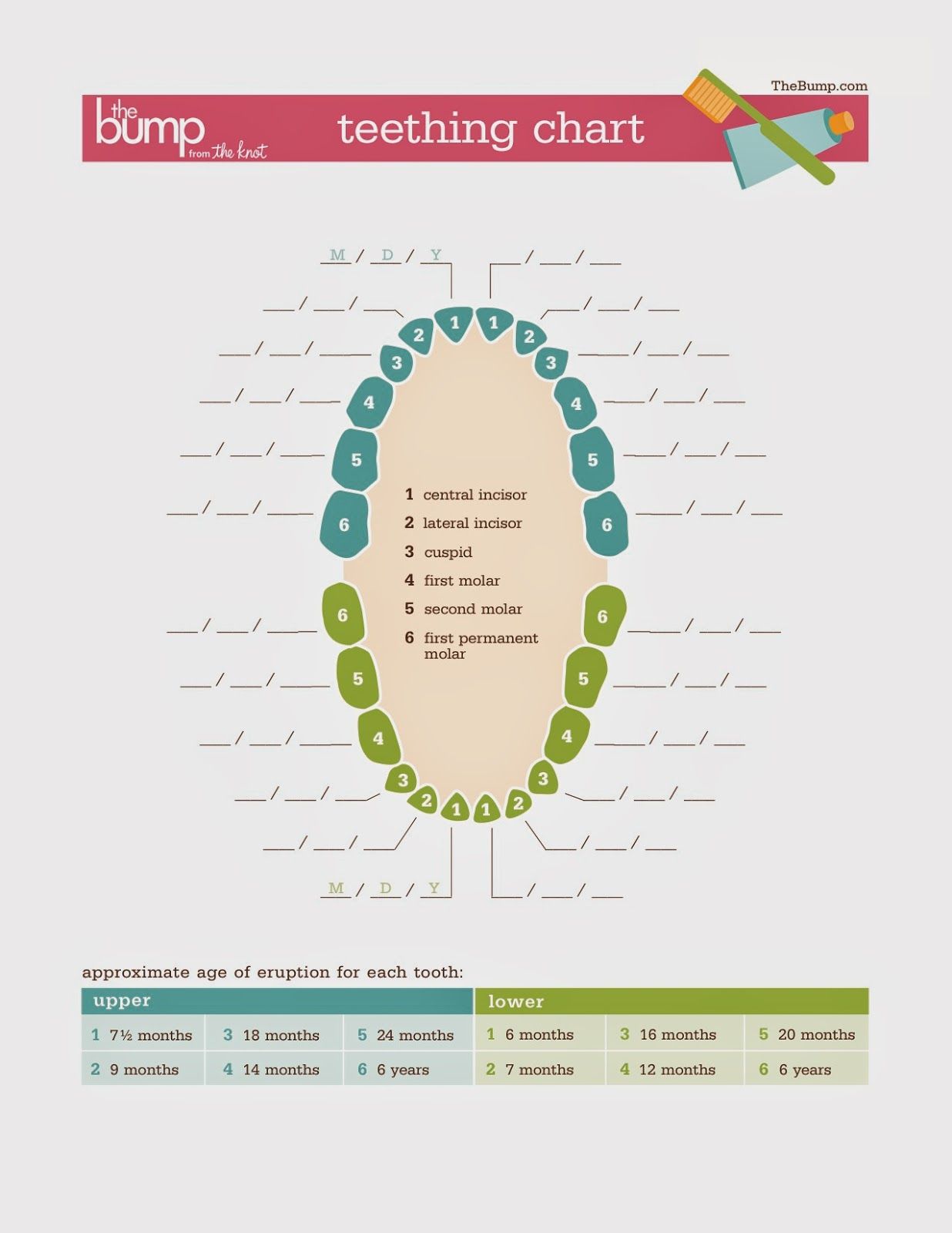
When and how teeth come in can be different for every baby and may be based on family history. But most of the time, the lower front two teeth come in first between 6 and 10 months, followed by the opposite top two teeth and the two on either side of those between 8 and 13 months. Next come the two on either side of the bottom front teeth, then the first molars appear between 10 and 16 months. The teeth in front of the first molars are next, and the back molars are the last ones to come in.
In all, 20 “baby teeth” will eventually be in place, usually by age 3.
What works to soothe a friend’s baby might not work for yours. You may need to try different things to help your little one feel better:
- Something cold in your baby’s mouth, like a cold pacifier, spoon, clean wet washcloth, or a solid (not liquid) refrigerated teething toy or ring. Some experts say frozen teething toys are too cold and may hurt your baby’s mouth. Make sure to clean teething toys, washcloths, and other items after the baby uses them.

- Try offering a hard, unsweetened teething cracker.
- If your baby is older than 6-9 months, you can offer cool water from a sippy cup, too.
- Massage the gums by gently rubbing them with your clean finger. If the teeth haven’t come in yet, you can let your baby gnaw on your finger. If you’re nursing your baby, try dipping your fingers in cool water and massaging their gums before each feeding. That may keep them from biting your nipple while nursing.
Never put anything in your baby’s mouth that isn’t specifically approved to help soothe teething. Even some products described as teethers or teething aids aren’t safe choices, including ones:
- Filled with liquid that can tear and spill
- Made of breakable material, like plastic, that can possibly lead to choking
- That are frozen solid — these can be too hard on a baby’s mouth
Another reason to be aware of the material used to make the teethers: Some can be made from harmful substances, like lead. Look for ones made of rubber.
Look for ones made of rubber.
Child health experts don’t recommend teething necklaces. They’re dangerous: They can strangle the baby. They also can choke if the necklace breaks and they swallow the beads.
If you do choose to use one, make sure to:
- Put it on a wrist or ankle, not around the baby’s neck.
- Always watch your baby when they wear it.
- Take it away when you aren’t watching your baby, even for a very short time.
You may have heard that amber teething necklaces release a pain reliever when heated. That’s not proven, and doctors say using one is not a good idea.
Medicine that you rub on your baby’s gums to stop the pain of teething may not help. It quickly washes away in the mouth and may numb the back of their throat and make it hard for them to swallow.
Stay away from over-the-counter teething gels and liquids that have the ingredient benzocaine. The FDA says this ingredient shouldn’t be given to children under 2. It can cause rare but serious side effects.
A small dose of a children’s pain reliever, such as acetaminophen, may help your baby. Don’t use ibuprofen for an infant under 6 months old, and ask your doctor before giving your baby any medication. Use it exactly as the doctor says.
Teething can be rough for you and your baby at first. But it’ll get easier as you both learn how to soothe each new tooth that pops out.
Good oral hygiene is important, even before your baby has teeth:
- Until teeth start to come in, clean your baby’s gums with a wet washcloth or piece of gauze at least once a day.
- Once they have teeth, clean your baby’s mouth the same way at least twice a day. After feedings is a good time for this.
- After their first birthday, you can start to use a soft-bristled baby toothbrush with water and a small amount of toothpaste that doesn’t have fluoride in it. You can also start flossing between their teeth.
Your child should see a pediatric dentist when the first tooth appears, or no later than their first birthday.
Top Picks
How to understand that a child is teething
The appearance of a baby is not only a great joy for parents, but also new worries. The child grows quickly, and now his first teeth begin to cut. This is a difficult period for both the baby and his parents. The support of relatives, a positive attitude and the attention of adults will help to make it as pleasant and comfortable as possible.
Interestingly, the formation of teeth in infants occurs while still in the womb. When a baby is born, 20 dental units are already laid in his gums. Each newborn develops individually. This also applies to teeth. Eruption begins at about 3-6 months. During this period, the baby becomes restless, naughty a lot, cries, suffers from diarrhea and fever.
When a baby is born, 20 dental units are already laid in his gums. Each newborn develops individually. This also applies to teeth. Eruption begins at about 3-6 months. During this period, the baby becomes restless, naughty a lot, cries, suffers from diarrhea and fever.
Teething symptoms
It all starts with profuse salivation. The kid gnaws on toys, fingers of parents and everything that comes to hand. Then the following symptoms appear:
- Swelling of the gums. The tooth begins to erupt, and the structure of the muscle tissue changes. At this time, the mucosa slightly increases in size, the gum becomes red. The closer to the surface of the tooth, the more noticeable the spot on the gum becomes.
- Runny nose. The mucous membrane in the nose begins to secrete more mucus. At this time, it is important to constantly rinse the child’s nose, give him plenty of water, and humidify the air in the children’s room.
- Sleep problems. Due to pain, the baby may not sleep well, often wake up with tears.

- Decreased appetite. During this difficult period, some babies may eat worse or refuse to eat at all. Because of the pain and discomfort in the gums, the child will not enjoy eating. Don’t worry, your appetite will return as soon as the pain subsides.
- Tears. Due to unpleasant and painful sensations, the baby is more often naughty, crying.
- Wet cough. Due to abundant salivation, liquid enters the respiratory tract, mucus accumulates, which the baby tries to cough up.
- Diarrhea. The child swallows a large amount of saliva, due to which the stool becomes liquid.
- Increased body temperature. Due to the fact that the child is teething, the surface of the gums becomes inflamed. The body produces a protective reaction in the form of increased temperature.
It is normal for babies under 1 year of age to have their first teeth. However, the first symptoms may resemble the onset of a disease. Pain, heat and discomfort are associated with the fact that the tooth must break through the bone and gum.
Things to watch out for
Baby’s teething can bring infection. If you notice the following symptoms, you should immediately take the child to a specialist:
- Severe cough with a lot of sputum, shortness of breath and wheezing.
- The baby has a very severe runny nose, greenish or cloudy white mucus is discharged from the nose. If this process lasts more than 3 days, you should consult a doctor.
- High temperature persists for more than 2 days (at or above 39degrees), is not knocked down by antipyretics.
- Frequent diarrhea with blood and mucus.
- Constipation for more than 3 days.
Your baby’s immune system is weakened during teething. At this time, it is necessary to protect him as much as possible from possible diseases, to postpone vaccinations. For any anxiety or discomfort, it is best to consult a pediatrician.
Teething diagram for children
The two central incisors in the bottom row erupt first, either in pairs or one after the other. Then – the incisors in the center of the top row. The next to appear are two lower and upper side ones. Babies from 1 year old most often already have four front teeth in both rows.
Then – the incisors in the center of the top row. The next to appear are two lower and upper side ones. Babies from 1 year old most often already have four front teeth in both rows.
After the incisors, canines and other dental units begin to appear. By about age three, a baby should have about 20 teeth, including incisors, molars, and canines. However, this process is different for every child. 20 teeth can be in a two-year-old child.
Teeth begin to erupt at 3-8 months. If the first appeared later, then the loss will begin later than in other children. By the age of 1, a child must have at least one tooth. If this does not happen, then the baby should be sent for examination. Specialists can detect rickets, hyperthyroidism and other diseases.
How to help your child when teething
There are many ways to help relieve pain during such a difficult period.
- Distraction. Buy your baby new toys, take him to a new playground, or put on some music.
 The child will switch his attention and forget about the pain for a while.
The child will switch his attention and forget about the pain for a while. - Teethers. In stores, you can find many toys and rodent rattles that will help relieve itching and pain from the gums.
- Teaching gel. Before use, be sure to consult a specialist and strictly follow the instructions. Dental gels can be used no more than 5-6 times a day. They have the effect of mild anesthesia, so a violation of the regimen of use can lead to intoxication of the baby’s body, impaired digestion and breathing.
- Antipyretics. If the baby has a fever, you can give him antipyretics. Choose drugs specifically for children, consult a specialist before use.
- Medicinal decoctions of herbs. They can be purchased at a regular pharmacy. Mixtures with lemon balm, sage, mint and chamomile help well. They relieve inflammation from the baby’s gums, have antiseptic properties.
- The period of teething is not easy, but try to survive it with the maximum positive, supporting your baby and perceiving this time as the next stage of growing up, of which there will be many more ahead.

timing, signs and ways to alleviate the condition
It would seem that just recently the period of colic in your baby’s tummy has passed. And here again he is capricious, crying and does not find a place for himself. The period has come when the child’s teeth are being cut. The appearance of the first incisors is accompanied by pain and a number of other unpleasant symptoms. How not to confuse it with other pathological processes? And how to alleviate the condition of the child? Young parents should learn more about the features of teething in babies.
When the first teeth appear
There is no unequivocal answer as to what time milk teeth begin to erupt. Each child’s body has its own characteristics, so the timing is individual. But there are generalized frameworks that can be guided by:
- At 4-7 months, the lower incisors appear. But there are times when the first tooth erupts at 3 months. Again, everything is very individual.
- At 7-9 months, two upper incisors appear.

- At 9-11 months – two teeth grow on the sides of the central ones on the upper jaw.
- At 11-13 months – two lower lateral ones.
In most cases, before the age of one, the child already has 8 front teeth. They erupt in pairs – one, and soon after it another. A one and a half year old baby usually already has first molars. They also appear in pairs on the lower and upper jaws. After them, fangs grow (the first, as a rule, from above). At 2 years old, the baby most often already has 16 teeth. At what age does the formation of a milk bite end? Normally, by the age of 2.5-3 years, the child already has a complete “set”, in which there are 20 teeth.
If your baby has a shift of 2 months (sometimes even 4 months) in one direction or another, it’s okay. This is not yet a departure from the norm. Which of the central teeth will appear first is not important. But if at first it was not the incisors that cut through, then this is already an anomaly, like their complete absence in a one-year-old baby. In these cases, you need to consult a doctor.
In these cases, you need to consult a doctor.
What factors affect the timing of the appearance of teeth
When which teeth are cut? Experts note that the beginning of the process of forming a milk bite is determined by various factors. The rudiments of the dentition are formed in the embryo as early as the 6-7th week of pregnancy. Their quality is determined by nutrition, lifestyle, and the presence of diseases in the mother. Long-term toxicosis, complications in bearing a child, premature birth (up to the 37th week), injuries when a baby is born can slow down the time. The time frame when teething begins also depends on such factors:
- heredity;
- types of nutrition – breastfeeding is more desirable than artificial, as it involves the active work of the facial muscles;
- nutritional quality – the more calcium the child’s body receives, the higher the likelihood that teeth will appear faster;
- climatic conditions – in children living in hot countries, the process starts faster;
- water quality;
- compliance with the rules of child care.

Affect the timing and various childhood diseases. So, with rickets, which is caused by a lack of vitamin D, the absorption of calcium is difficult. Deficiency of this element negatively affects the development of teeth. With metabolic disorders, endocrine, infectious diseases, problems in the functioning of the digestive tract, the appearance of teeth can also be belated. It happens that the child has no rudiments – complete or partial adentia. You can confirm or exclude fears with the help of x-rays.
According to long-term observations, it was noted that boys teeth erupt faster than girls.
What symptoms accompany the process of teething
How can you tell if a child is teething? Most often, this process is difficult to miss, because only in rare cases does it not cause pain and other unpleasant sensations.
General signs
The baby may become restless, capricious. Of course, these signs can be associated not only with the appearance of teeth. For this reason, you should also pay attention to the presence of the following symptoms:
For this reason, you should also pay attention to the presence of the following symptoms:
- Gingival swelling visible to the naked eye. The tissues become bright red. Gingival swelling can also be determined by palpation. Sometimes a hematoma or abscess forms on it.
- Increased salivation. Such a symptom may be present in a child up to a year. Due to heavy salivation, the skin is irritated, so a rash may appear around the mouth.
- Loss of appetite. Explained by uncomfortable sensations in the mouth. Also during this period, the baby’s taste sensations may change, so if he refuses food that he used to like, do not be surprised.
- The child’s desire to put everything in his mouth. The fact is that the baby is tormented by severe itching and he is trying to somehow alleviate his condition.
- Acid breath.
The level of pain in each case is different. Against the background of all these symptoms, the child’s sleep is disturbed.
Health disorders
Comparatively harmless symptoms are listed above. But there are times when during this period the child’s health deteriorates, as immunity weakens. This manifests itself in the form of such signs:0003
- An increase in body temperature is the body’s reaction to tissue damage, infection and, as a result, inflammation. It is important to monitor the cleanliness of the hands and objects that the baby gnaws. Normally, the indicators are not higher than 38 ˚С and disappear in a day. If it increases and lasts more than 3 days, you need to see a doctor.
- Runny nose. Saliva, which is abundant during this period, can enter the nasopharynx or even the middle ear. So there is a runny nose.
- Cough. It also occurs due to excessive salivation. A large amount of mucus accumulates in the throat. The baby cannot swallow it reflexively. The throat is cleared by coughing.
- Diarrhea. It is necessary to pay attention to the duration of the disorder.
 Normally, it should pass in a period of up to 3 days. There should be no blood, black or green blotches in the stool. Diarrhea occurs when mucus enters the stomach with food. Less often, constipation may occur for the same reason.
Normally, it should pass in a period of up to 3 days. There should be no blood, black or green blotches in the stool. Diarrhea occurs when mucus enters the stomach with food. Less often, constipation may occur for the same reason.
Most of these signs are similar to viral diseases. If you ignore the symptoms, you can get complications. Therefore, it is important to carefully monitor the combination of signs, the condition of the child, take into account how many days the malaise lasts. If the baby is too lethargic, diarrhea has become more frequent, vomiting has appeared, you should consult a doctor.
How to ease teething
As already mentioned, in most cases, the process of teething is accompanied by pain and itching. At this time, the baby needs special care – play with him, talk, ensure thorough hygiene. It is also important to remain calm. Remember that babies feel the emotional mood of their parents. To understand how to help the child at this time, you need to read the recommendations of specialists. There are different ways to do this.
There are different ways to do this.
Medicines
Depending on the symptoms, the following pharmacy products are used:
- Ointments and gels. Only a specialist can suggest how to anesthetize teething. Often, babies are prescribed “Kamistad Baby”, “Baby Doctor”, “Kalgel”, “Dentinox”, etc. These drugs have an antiseptic and cooling effect.
- Syrups and suppositories. If the temperature rises to 38.5 ° C, antipyretics are needed. In this case, Nurofen, Panadol will help. It is important to carefully observe the indicated dosages and frequency of administration.
- Nasal drops. With a runny nose, 1-2 drops of Aquamaris or saline should be instilled into each nostril. Doing this will help flush out mucus from your nasal passages and make it easier for your baby to breathe.
Remember that self-medication is dangerous for your baby. Therefore, coordinate all your actions with the pediatrician. If other unwanted symptoms are noticed, such as redness of the throat, take the child to the doctor.
Alternative methods
Medicines should only be used as a last resort. First you need to try to help the child, using safer methods. Among them:
- Gingival cooling. If the question is how to alleviate the baby’s condition and relieve pain, the cold will be your best assistant. Pharmacies sell special teethers filled with water. They are cooled in the refrigerator and offered to the baby. The child massages the gums with a teether. So the inflammation is removed, the outflow of blood from the painful place is ensured.
- Gum massage. Make it with clean fingers without intense pressure. It is important to make sure that there are no long nails, otherwise you can damage the fabric for the baby. You can wrap a sterile bandage on your fingers soaked in chamomile infusion or boiled water. Often the child is offered pieces of fruit or vegetables. They are wrapped in gauze and make sure that the baby does not choke.
Teeth don’t cut in one day, so please be patient. How to understand that they have already begun to appear? On the surface of the gums you will see the long-awaited tubercles. This will be the “crown” of all your patience.
How to understand that they have already begun to appear? On the surface of the gums you will see the long-awaited tubercles. This will be the “crown” of all your patience.
Correction of the child’s lifestyle during teething
Parents often have a lot of questions regarding their child’s habitual lifestyle.
Is it possible to walk
For newborns, fresh air is one of the main conditions for harmonious development and growth. Staying within four walls when a baby is teething is definitely impossible. If the child is not lethargic, he does not have a temperature above 38 ˚С, then a walk is an obligatory “ritual”. An exception may be bad weather – severe frost or heat, rain, gusty wind.
Is vaccination possible? The process is not a contraindication to immunization. But if the child does not feel well, he has a fever, then it is better to postpone the vaccination until the baby’s condition is normal.
Is it possible to introduce complementary foods
It is recommended to introduce complementary foods at about 5 months or half a year.

 Some experts say frozen teething toys are too cold and may hurt your baby’s mouth. Make sure to clean teething toys, washcloths, and other items after the baby uses them.
Some experts say frozen teething toys are too cold and may hurt your baby’s mouth. Make sure to clean teething toys, washcloths, and other items after the baby uses them.

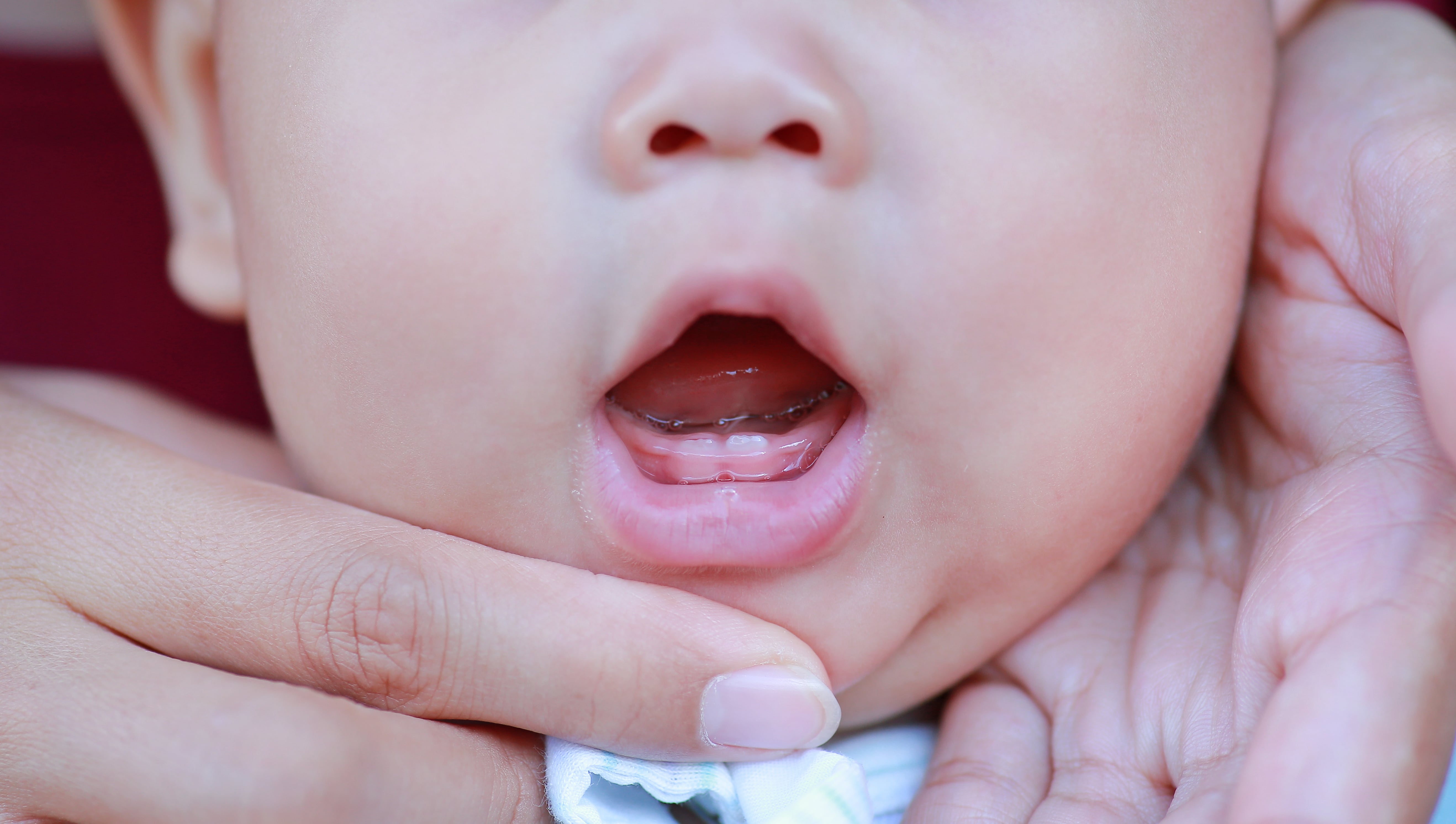 The child will switch his attention and forget about the pain for a while.
The child will switch his attention and forget about the pain for a while.


 Normally, it should pass in a period of up to 3 days. There should be no blood, black or green blotches in the stool. Diarrhea occurs when mucus enters the stomach with food. Less often, constipation may occur for the same reason.
Normally, it should pass in a period of up to 3 days. There should be no blood, black or green blotches in the stool. Diarrhea occurs when mucus enters the stomach with food. Less often, constipation may occur for the same reason.